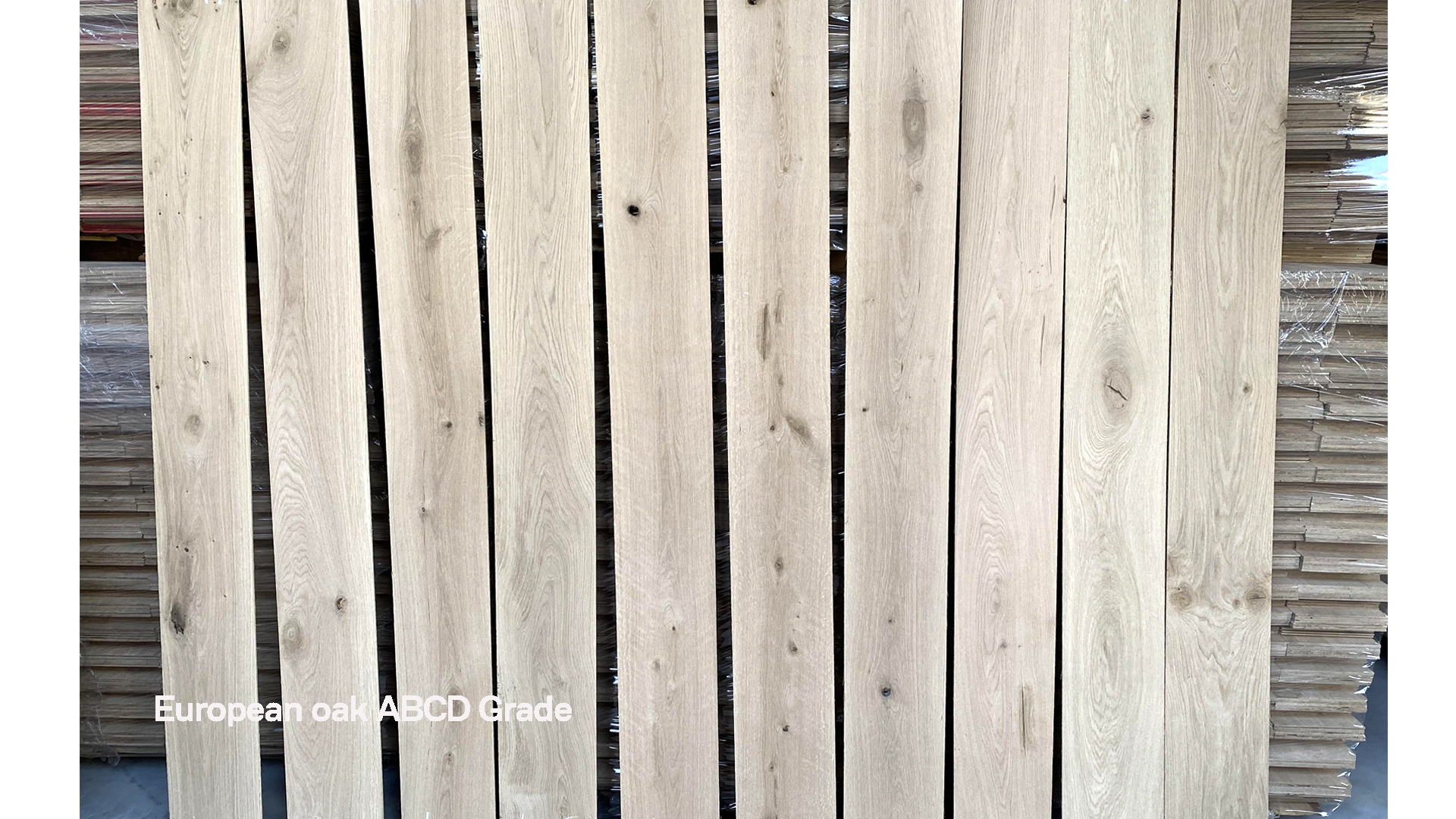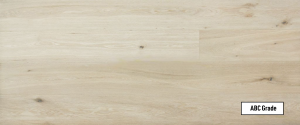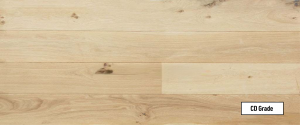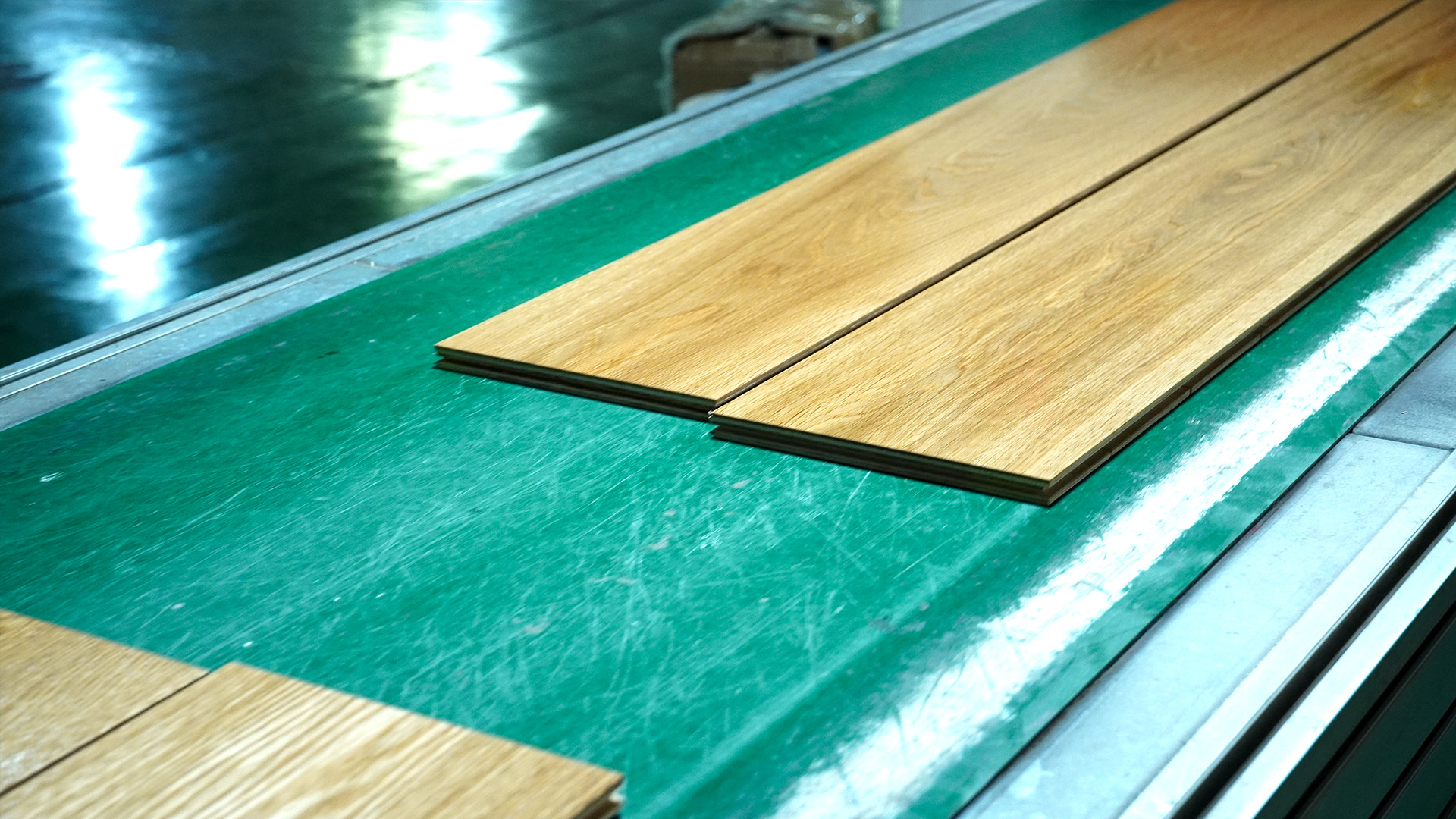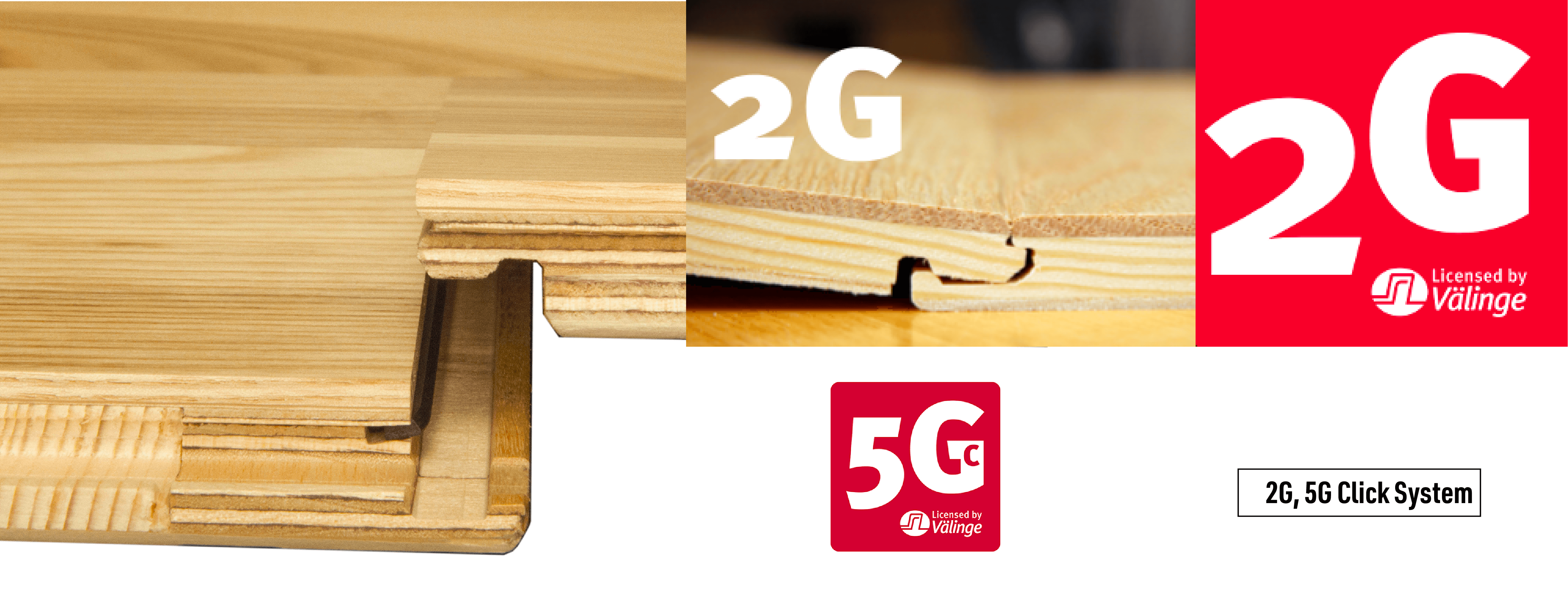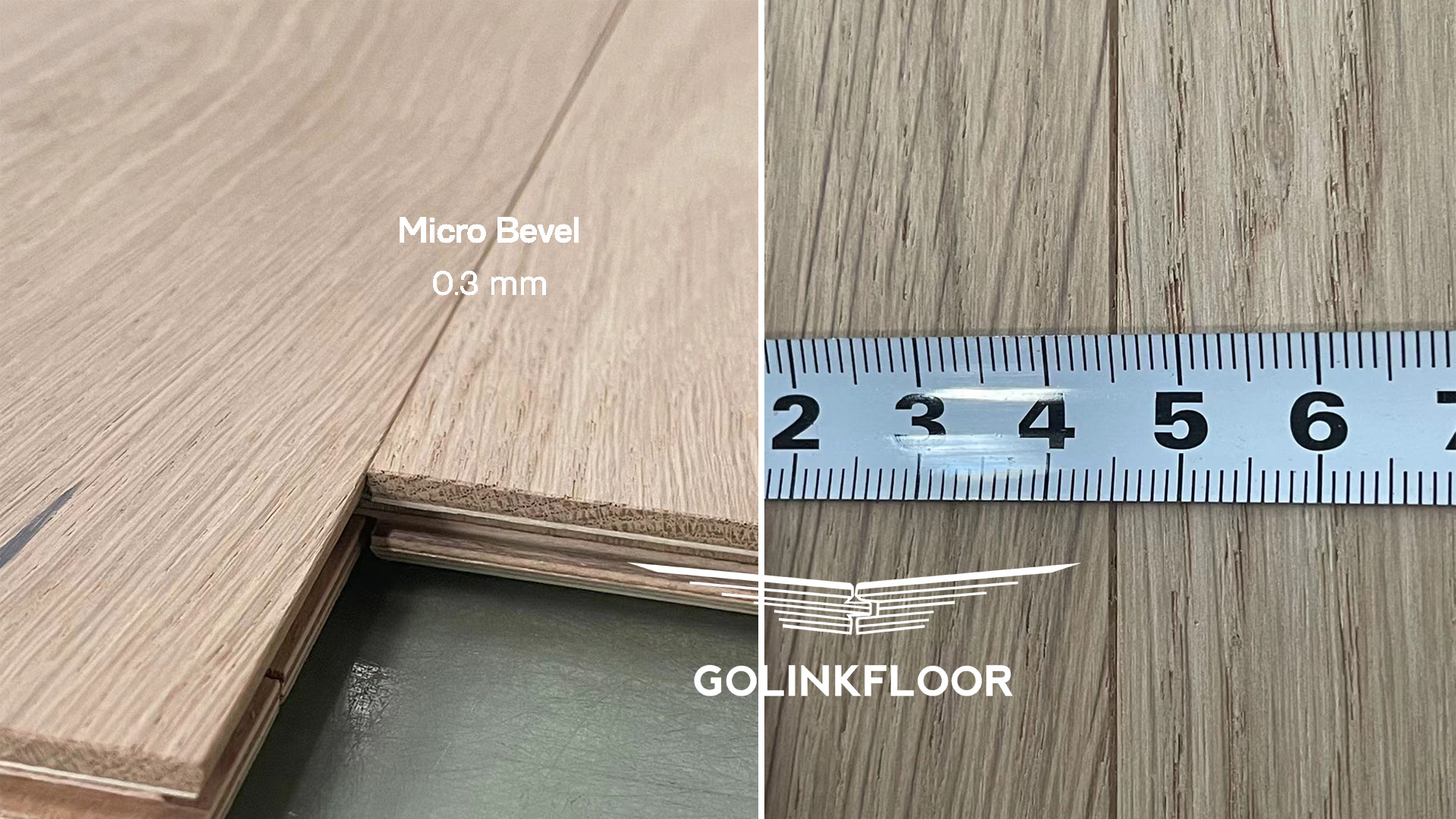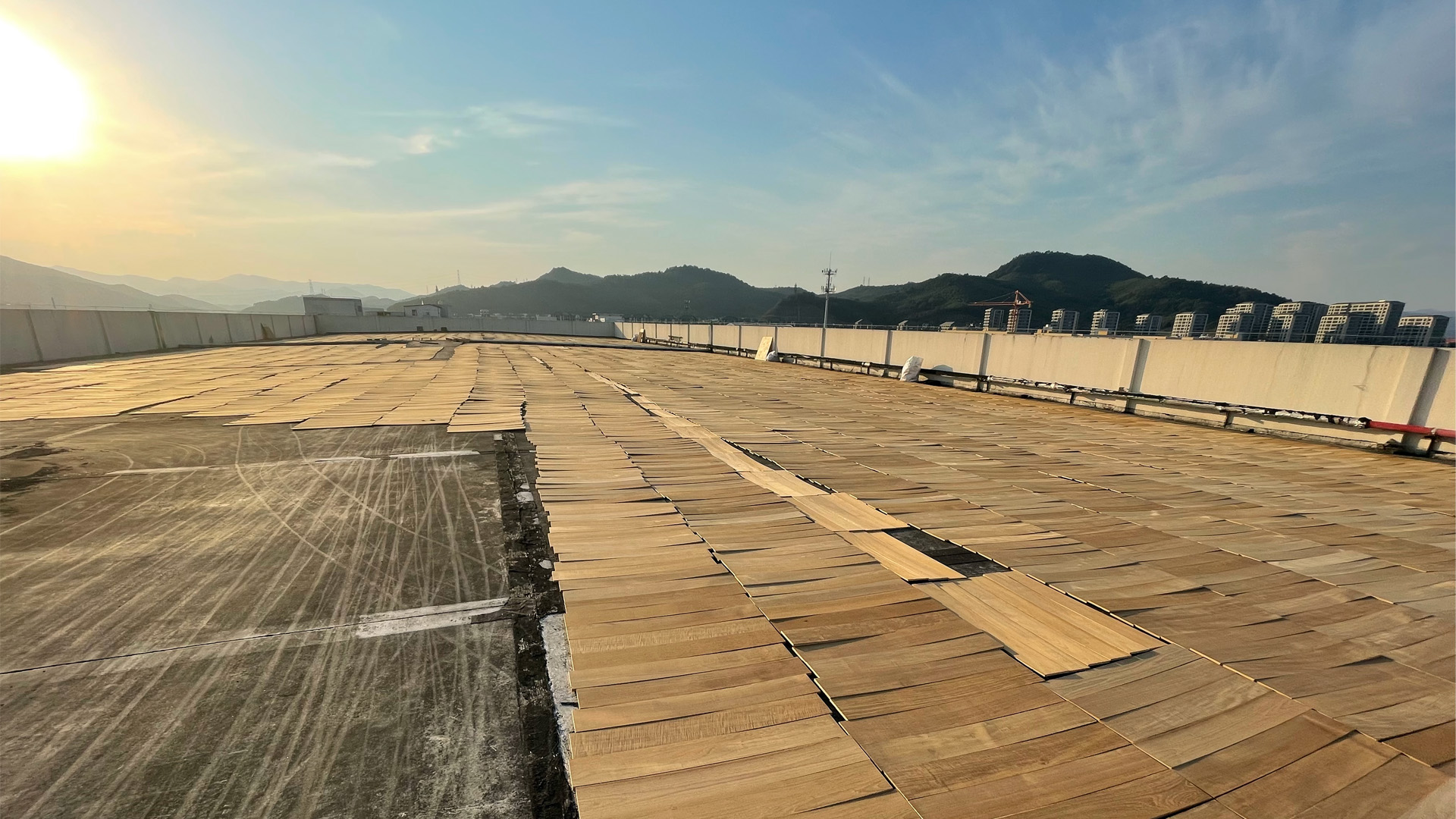
When people decide to buy solid hardwood flooring and engineered wood flooring, wood grade is the most difficult part, even though you can easily understand wood defects through essay or information on the Internet. And you may also find every wood flooring manufacturer has their own wood grade rules and these rules change periodically, besides, different countries have completely different wood grade rules and price also varies great with the same wood grade. We will answer all these questions mentioned above and how to buy the most suitable or cost-effective wood flooring through wood grades, wood defects.
Oak is most popular wood species used on wood flooring on the global market, so we mainly focus on oak grade rules and oak defects. Oak grade rule can also apply on Black walnut and teak, you can easily use it when you plan to purchase walnut or teak flooring online or offline.

Wood Grades(Engineered Oak Grading Rules).
First know that Oak grades can be classified into AB, ABC, ABCD, CDE, CD, EF etc in China, and you may also heard that Select, Nature, Mixed, Country, Rustic Grades from Europe manufacturers or Premium, Prime, Classic, Natural Grades etc from North America manufacturers. Don’t worry, all these Grades are defined by wood defects that we would explain below, you can easily understand them with exact technical sheet. So let’s move on China wood flooring grades rules: A, B, C, D, E, you may also notice EF oak grade in China, according to our experience, CDE, EF grade is popular in Germany and Austria.
- A/ Clear / Premium / FAS & F1F –This is the best part of oak/wood, most uniform in color, variation may occur in the direction of the grain, looks beautiful and clear, almost no defects, only has sound knots and group knots, and vertical grain with minimal pin knots and an overall linear clear looking with beautiful sweeping medullary rays.
- B/ Select / Prime – Mild color variation, some shadowing, little tiny part of black streak, second best part of oak/wood。
- #1 Common/ Cabin / Shop / C Grade – This grade has lively variation, considerable shadowing, slight discolouration, minor end cracks and some small sapwood.
- #2 Common D Grade – The most popular grade on the market, and it gets more natural wood defects, bigger knots, small splits and cracks, worm holes and very lively color variation.
- Rustic / E Grade – Penultimate grade in our oak Grade rule, E grade contains all oak natural defects with big splits, decay, watermark, wane, sapwood and natural cracks on heartwood, the grade price is cheap, but need much repairing work for factory to make it available for finished flooring.
What defines a ‘minor’ blemish from a significant one bears some argument but it’s good to know the groundwork of what defines each class. Some of those blemishes or defects include:
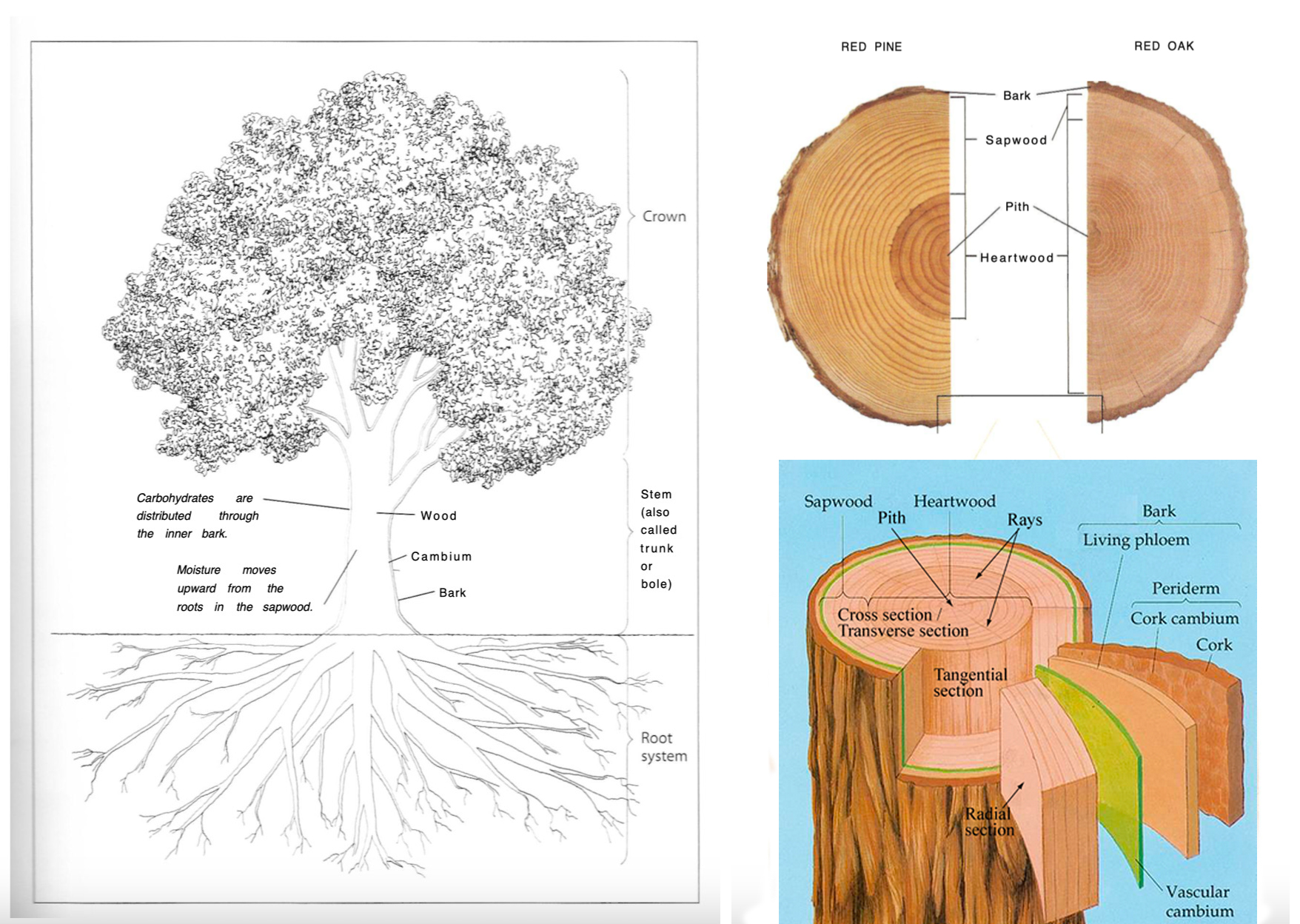
1. Burls – Burl or burr is the result of hyperplasia, a greatly abnormal proliferation of xylem production by the vascular cambium. In other words, it is likely that some sort of infection by bacteria, viruses, fungi, or insects causes the tree to respond with highly irregular wood growth.
It is commonly found in the form of a rounded outgrowth on a tree trunk or branch that is filled with small knots from dormant buds. Burls can be found on many kinds of trees: oaks, maples, walnut and cherries.
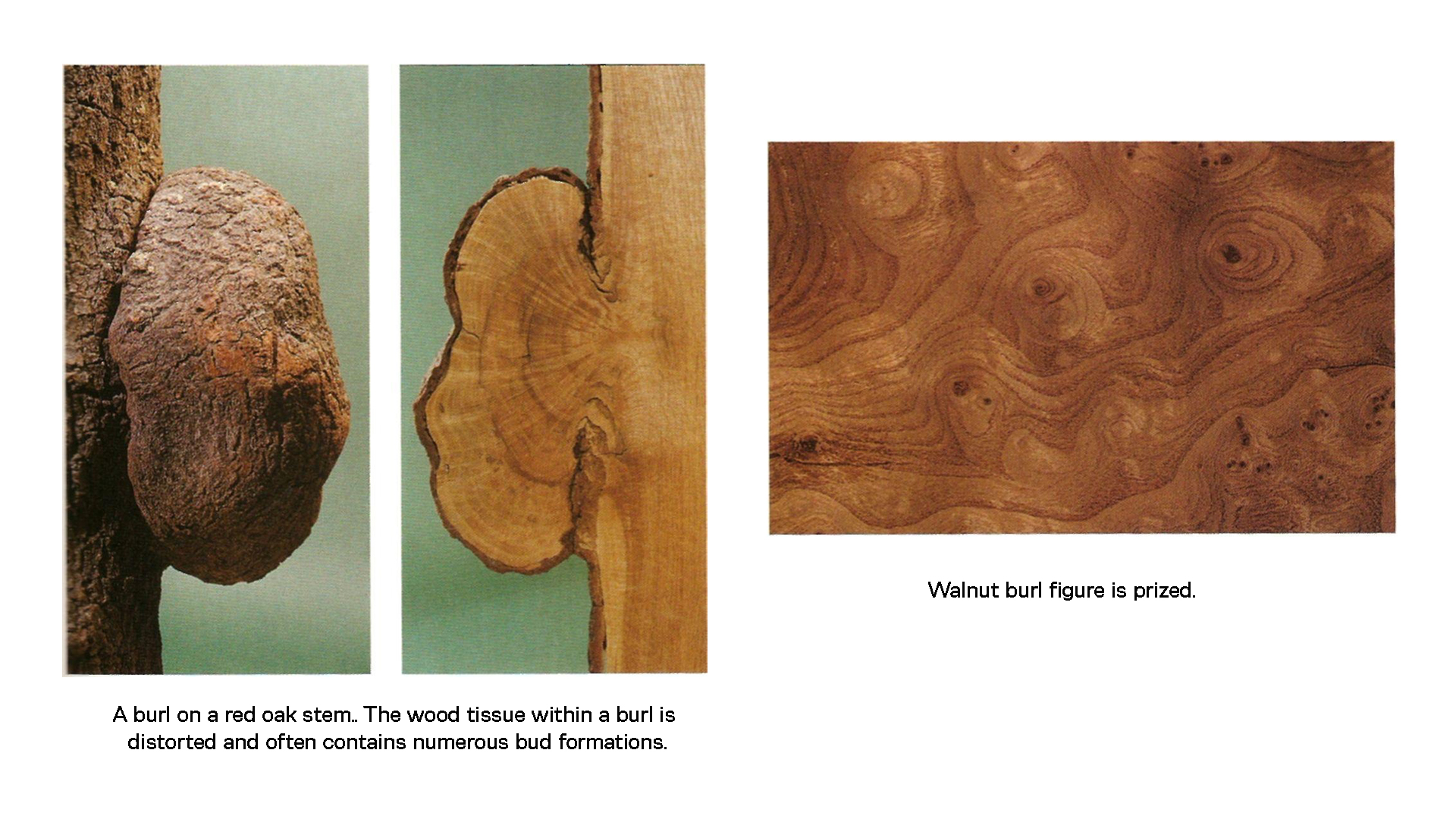
2. Knots – Knot is the base of a branch or limb that was broken or cut off from the tree. As a tree grows, lower branches often die, and their bases may become overgrown and enclosed by subsequent layers of trunk wood, forming a type of dark hard rings known as a knot. Knots diameter less than 3mm not belongs to knots, knots shows in our OAK ABC, ABCD, CD, CDE, EF Grades etc.
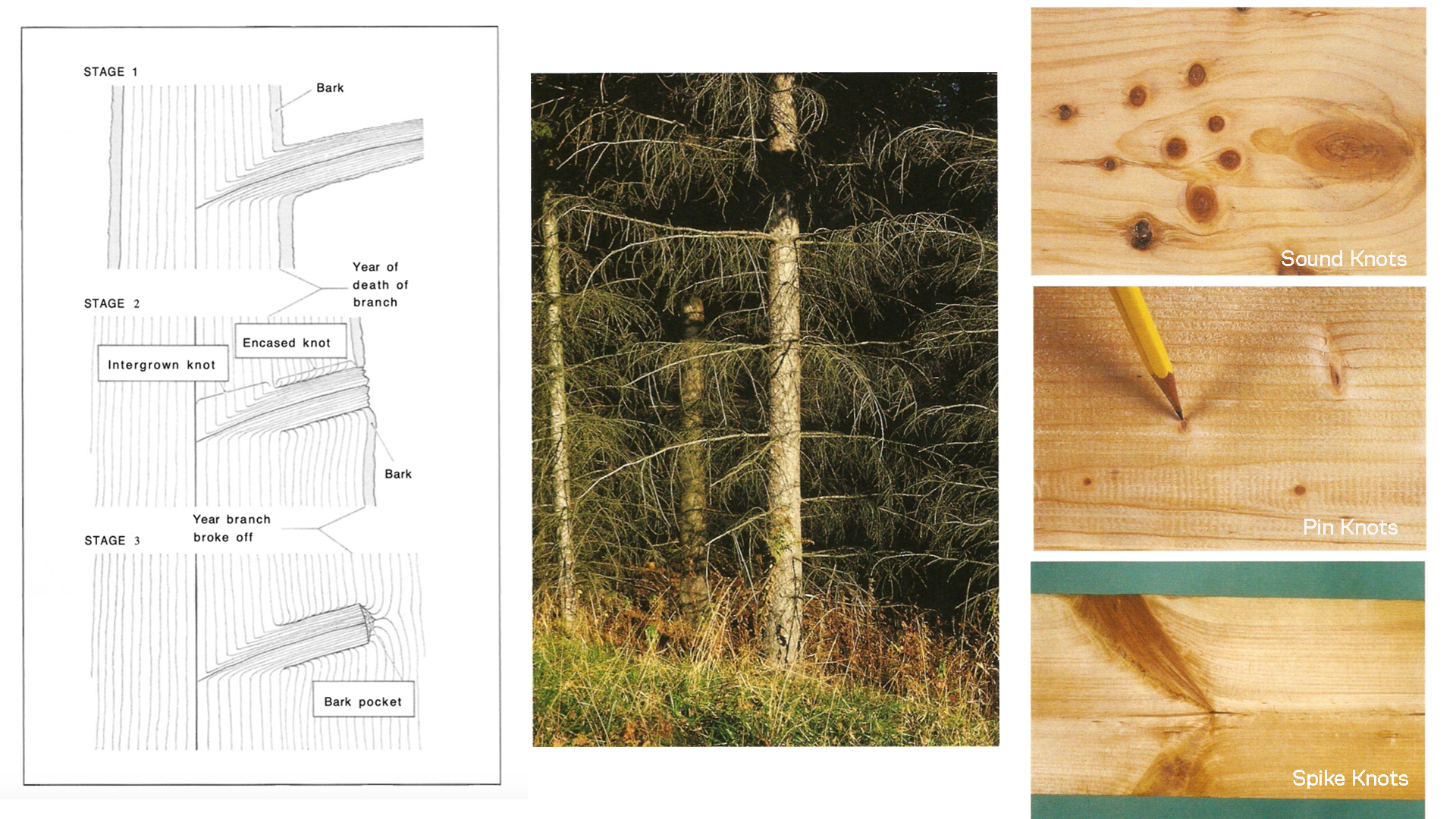
- Sound (or tight knots) are solid and cannot be knocked loose because they are fixed by growth or position in the wood structure. They are partially or completely intergrown with the growth rings.
- Unsound knots (or loose knots) are knots which fall out of the lumber when pushed or have already fallen out. They are caused by a dead branch that was not fully integrated into the tree before it was cut down.
- Encased knots are those which are not intergrown with the surrounding wood.
- Knothole is a hole left where the knot has been knocked out.
- Spike knots are limbs which have been cut across or cut lengthwise, showing the endwise or lengthwise section of the limb or knot. These knots generally have splits and severe grain deviations near them.
3. Sapwood – Sapwood is the younger, outermost wood; in the growing tree it is living wood, and it’s like a pipeline to conduct water from the roots to the leaves and to store up and give back according to the season the reserves prepared in the leaves similar to the way blood flows through our veins, capillaries, and arteries. Sapwood shows in our OAK ABCD, CD, CDE, EF Grades etc.
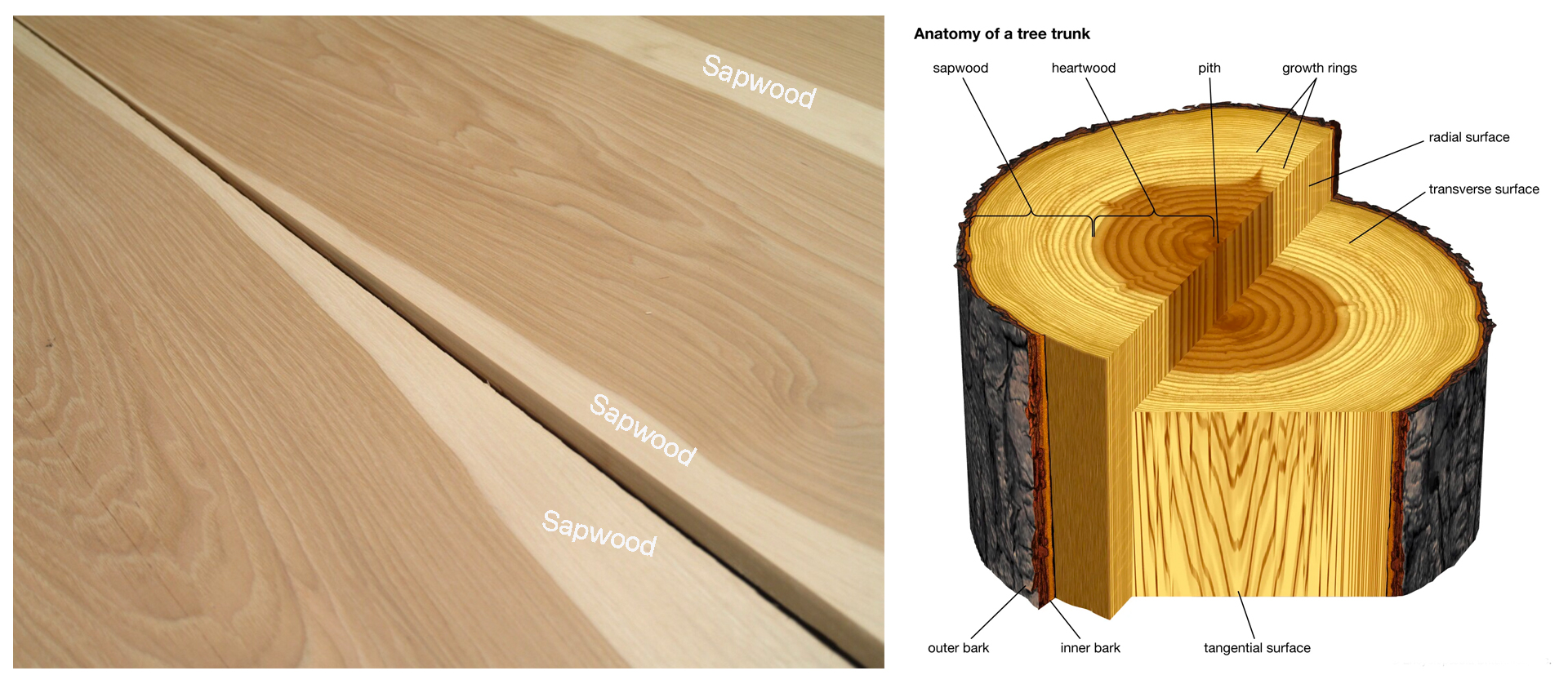
4. Worm Holes – Holes made by boring insects of their larvae. Typically the adult wood boring insects burrow inside of trees and lay eggs on or just under the surface of wood. The resulting grubs, or insect larvae feed on the wooden item causing both structural and cosmetic damage. They then pupate and hatch as beetles that then breed, lay eggs and repeat the process, causing further damage. Worm holes shows in our OAK ABC, ABCD, CD, CDE, EF Grades etc.

5. Black Streaks – Mineral streak is an area of the wood that has a different color due to its mineral content creating when tree absorb and deposit minerals from the soil. Mineral streaks run parallel with the grain, and they are easy to identify and measure. Less than 10% or 25% per board exist on our oak ABC, ABCD, CD, CDE, EF Grades.
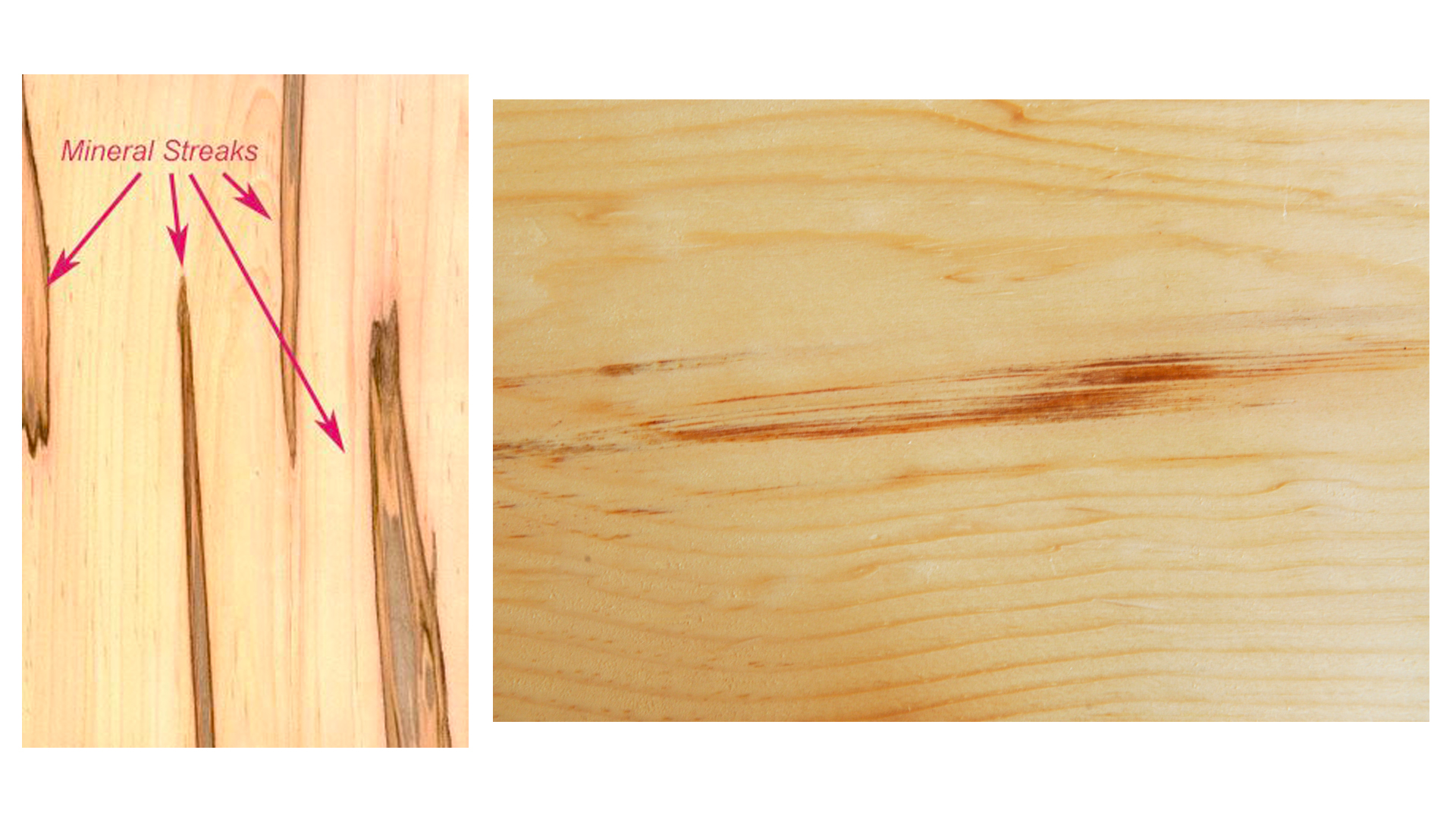
6. Milling Imperfections – When lumber is made into veneer products, there may machine burn, cut marks, and gouges defects on veneer surface, in general, these imperfections can be cleaned or sanded out, then these perfect veneer can also be used on high grade flooring. If not good, they will downgrade wood flooring grade and cause loss to factory.
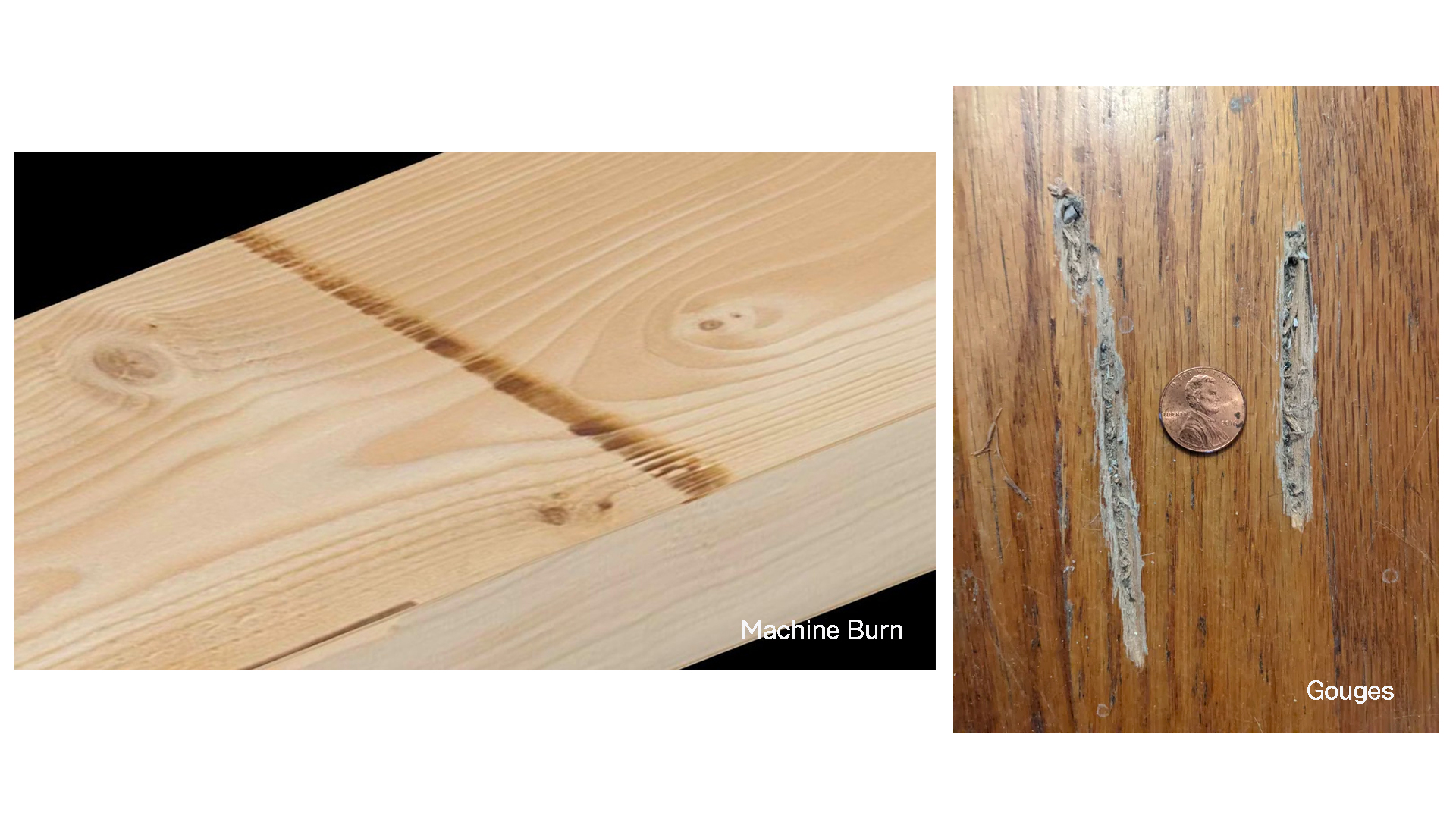
7. Splits & Checks – Splits and checks occur when wood shrinks as drying(natural seasoning or kiln dry). Wood shrinks roughly twice as much along with the growth rings (radially) as it does across the rings (tangentially). It is this uneven shrinkage that causes checks and splits to come. Check usually develop near the wood end, splits happen full lengthwise along with the grain and split is not accept by OAK AB, ABC Grades.
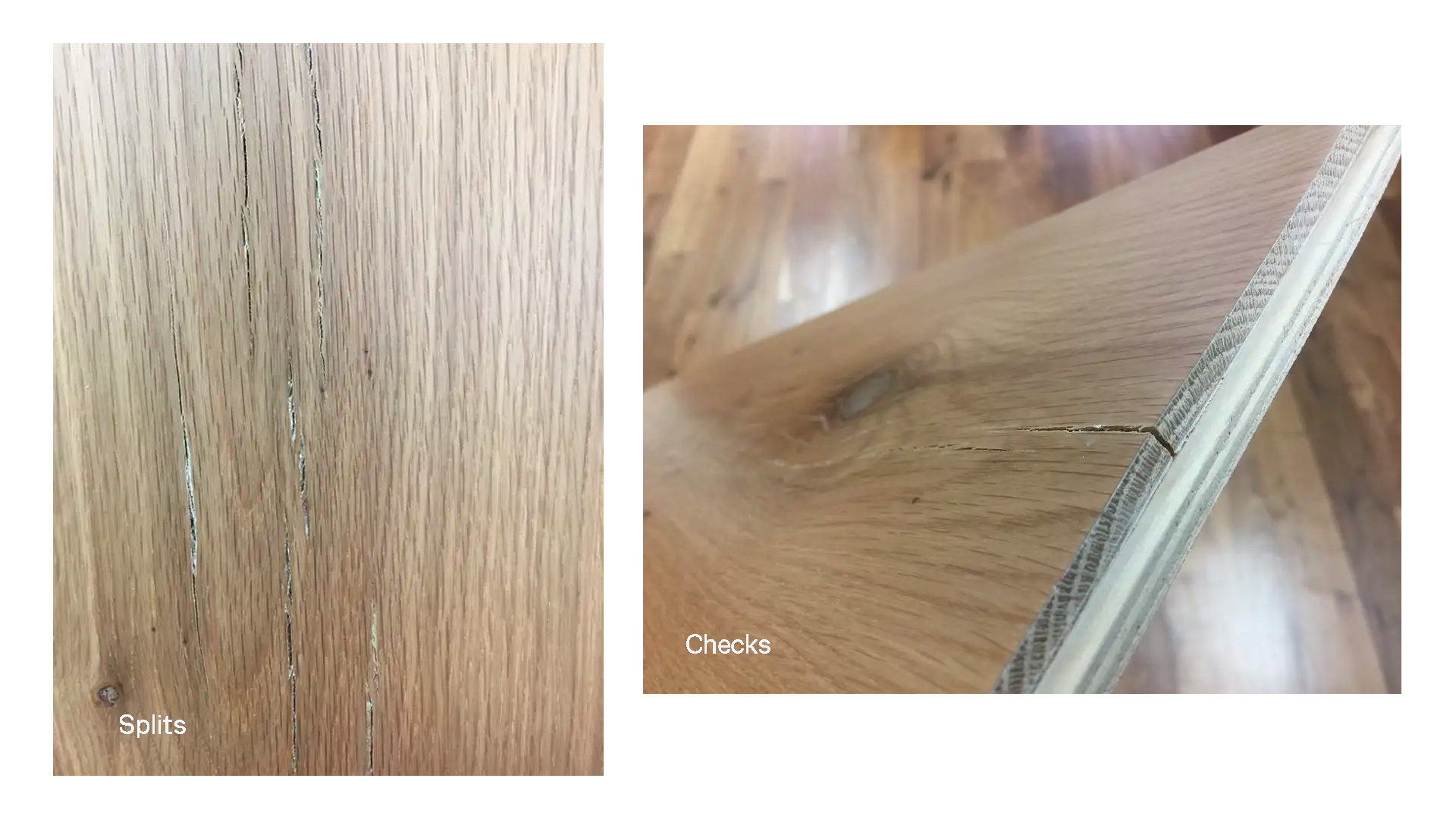
Natural wood defects can be found on most wood species, also including Oak, which wood grades you need depend on your taste and budget. Although we have listed main defects on this article, but there are many details that you carefully check, such as knots size, grain slope, watermarking on wood etc. In China, AB, ABC are two highest grades on oak, walnut flooring, if you like wood natural defects flooring, we recommend engineered oak ABC, ABCD grades. If you prefer clear wood flooring, AB would be best option.
If you have no idea about wood grades when you plan to import wood flooring from China, please communicate with flooring manufacturers and ask them to show your Grade details, also including finished product grades and oak veneer grade pictures, just like us below.
